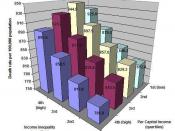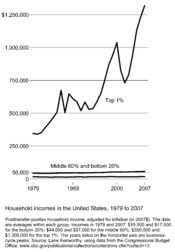For better than two decades, the orthodox recipe for global growth has been embodied in the so-called Washington Consensus. This approach, advocated by the United States and enforced by the World Bank and the International Monetary Fund (IMF), holds that growth is maximized when barriers to the free flow of capital and commerce are dismantled and when individual economies are exposed to the discipline, consumer markets, and entrepreneurs of the world economic system. Proponents of this view have contended that the free-market approach to development will also alleviate poverty, both by raising overall growth rates and by bringing modern capitalism to the world's poorest.
Yet the actual experience since 1980 contradicts almost every one of these claims. Indeed, the free-trade/free-capital formula has led to slower growth and more vulnerability for poor countries--and to greater income disparity among individuals. In 1980 median income in the richest 10 percent of countries was 77 times greater than in the poorest 10 percent; by 1999 that gap had grown to 122 times.
Progress in poverty reduction has been limited and geographically isolated. The number of poor people rose from 1987 to 1998; in many countries, the share of poor people increased (in 1998 close to half the population in many parts of the world were considered poor). In 1980 the world's poorest 10 percent, or 400 million people, lived on the equivalent of 72 cents a day or less. The same number of people had 79 cents per day in 1990 and 78 cents in 1999. The income of the world's poorest did not even keep up with inflation.
Why has the laissez-faire approach worsened both world growth and world income distribution? First, the IMF and the World Bank often commend austerity as an economic cure-all in order to reassure foreign investors of...



The author didn't write this
This is an article published in the American Prospect in 2002, written by Christian Wellar and Adam Herst.
0 out of 0 people found this comment useful.